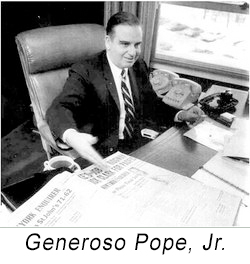A recent article by Don Dicker for The Huffington Post has the following headline: “Mother Teresa Humanitarian Image A ‘Myth,’ New Study Says”
The article goes on to say:
A new study by Canadian academics says Mother Teresa was a product of hype who housed the poor and sick in shoddy conditions, despite her access to a fortune. The Times of India, reporting on the controversial essay, wrote that the authors asserted Mother Teresa saw beauty in the downtrodden’s suffering and was far more willing to pray for them than provide practical medical care. Meanwhile, researchers say, the Vatican engaged in a PR ploy as it threw aside concerns about her suspicious financial dealings and contacts to forgo the five-year waiting period to beatify her.
. . . .
The research paper claims that the celebrated nun had 517 missions in 100 countries at the time of her death, but that the majority of patients were not cared for properly and many were left to die, according to the university website. In addition, the Vatican is said to have ignored a doctor’s assertions when it concluded that a Mother Teresa miracle healed a woman who had tuberculosis and an ovarian cyst.
Mother Teresa? Really?
Yes, really. These days, it seems, no one is immune to investigation, glorification, or castigation. The speed up of the flow of information—from the speed of a man on horseback, to the locomotive, to the plane, to the speed of light electronic information travels—has apparently put everyone on the planet—from the poorest of the poor, to the richest of the rich—in the path of every information and communications device available.
It is a trend with a history that encompasses almost all of the 20th century till now.
In 1926, William Griffin, a protégé of William Randolph Hearst, founded The New York Evening Enquirer, a Sunday afternoon broadsheet newspaper distributed throughout New York City, using money lent to Griffin by Hearst. As partial payment of his loan, Hearst asked Griffin to use the Enquirer as a proving ground for new ideas. Hearst took the ideas that worked and put them in his successful publications; the less successful ideas stayed with the Enquirer, and as a result the Enquirer’s sales never soared. During the 1930s and 1940s, it became a voice for isolationism and pro-fascist propaganda. The paper was indicted along with Griffin under the Smith Act for sedition by a grand jury in 1942 for subverting the morale of US troops due to Griffin’s editorials against US military involvement in World War II. The charges were later dropped.
 By 1952 the paper’s circulation had fallen to 17,000 copies a week and it was purchased by Generoso Pope Jr., the son of the founder of Il Progresso, New York’s Italian language daily newspaper. In 1953, Pope revamped the format from a broadsheet to a sensationalist tabloid focusing on sex and violence. The paper’s editorial content became so salacious that Griffin was forced by New York City’s Mayor, Robert F. Wagner to resign from the city’s Board of Higher Education in 1954. In 1957, Pope changed the name of the newspaper to The National Enquirer and changed its scope to national stories of sex and scandal. Pope worked tirelessly in the 1950s and 1960s to increase the circulation and broaden the tabloid’s appeal. At this time the paper was sold on newsstands and drugstores only. Pope stated he got the idea for the format and these gory stories from seeing people congregate around auto accidents.
By 1952 the paper’s circulation had fallen to 17,000 copies a week and it was purchased by Generoso Pope Jr., the son of the founder of Il Progresso, New York’s Italian language daily newspaper. In 1953, Pope revamped the format from a broadsheet to a sensationalist tabloid focusing on sex and violence. The paper’s editorial content became so salacious that Griffin was forced by New York City’s Mayor, Robert F. Wagner to resign from the city’s Board of Higher Education in 1954. In 1957, Pope changed the name of the newspaper to The National Enquirer and changed its scope to national stories of sex and scandal. Pope worked tirelessly in the 1950s and 1960s to increase the circulation and broaden the tabloid’s appeal. At this time the paper was sold on newsstands and drugstores only. Pope stated he got the idea for the format and these gory stories from seeing people congregate around auto accidents.
By 1966, circulation had risen to one million. Pope pioneered the idea of selling magazines at supermarket checkouts. In order to get into the  supermarkets, Pope completely changed the format of the paper in late 1967 by dropping all the gore and violence and instead focusing on more benign topics like celebrities, the occult and UFOs. The National Enquirer spawned competitors like the Star, and others. It was ultimately sold after Pope’s death for $412 million!
supermarkets, Pope completely changed the format of the paper in late 1967 by dropping all the gore and violence and instead focusing on more benign topics like celebrities, the occult and UFOs. The National Enquirer spawned competitors like the Star, and others. It was ultimately sold after Pope’s death for $412 million!
One of the key words in this very short history is “celebrities.” Combine the print stories in The National Enquirer purveyed with unabashed distortion with the accelerated growth of electronic media devices of all kinds in the second half of the 20th century and you have—voilá—the largest array of heroes to bring down ever in the history of mankind. There should be no need to point to all of the radio and television programs and web sites that now seduce listeners and viewers into lapping up the latest gossip and bad deeds, although, apparently, there’s no such thing as bad publicity. Just ask all the politicians, securities analysts, and athletes who have behaved badly and who have managed to build other paths to financial success!
But there’s another outcome. Daily, it seems, people in authority, people we have looked up to, people from whom we expect good behavior, people to whom we have given trust and respect, people who have overcome significant challenges and obstacles, these same people are then investigated and become the subject of such close scrutiny as to undermine the value of their contribution to society, or, conversely their immediate behavior or past behavior cracks the image we had of them.
 Here are just a few names: Oscar “Blade Runner” Posterius, Cardinal Keith O’Brien (now former Archbishop of Scotland), former Ponzi scheme operator Bernie Madoff, former NYC Police Commissioner Bernie Kerik, for seven-time Tour de France champion cyclist Lance Armstrong, slugger Barry Bonds, Tiger Woods, O.J. Simpson, and 2008 Vice Presidential Candidate John Edwards. It feels like a daily occurrence. And the media—newspapers, magazines, radio, broadcast television, cable television, the Internet—all follow what is perceived as the public’s desire to gravitate around what Genereso Pope, Jr. observed as the latest auto accidents, except in this instance the “accidents” are people’s “accidentally on purpose bad behavior.”
Here are just a few names: Oscar “Blade Runner” Posterius, Cardinal Keith O’Brien (now former Archbishop of Scotland), former Ponzi scheme operator Bernie Madoff, former NYC Police Commissioner Bernie Kerik, for seven-time Tour de France champion cyclist Lance Armstrong, slugger Barry Bonds, Tiger Woods, O.J. Simpson, and 2008 Vice Presidential Candidate John Edwards. It feels like a daily occurrence. And the media—newspapers, magazines, radio, broadcast television, cable television, the Internet—all follow what is perceived as the public’s desire to gravitate around what Genereso Pope, Jr. observed as the latest auto accidents, except in this instance the “accidents” are people’s “accidentally on purpose bad behavior.”
We should not fault Pope for observing a consistent aspect of human behavior and building a successful business around it. The editorial approach he crafted and the distribution venue he latched on to does not appeal to everyone. But the fact that the mass media has picked up on his concept and has relentlessly pushed it onto the general public has created a culture that undermines behavior of a higher order. The fabric of a society depends on the collective character of its people. If every day we read, hear, and see others behaving badly, or, worse, getting away with it, or only receiving a slap on the wrist for egregiously bad behavior, or reading, hearing, and seeing others behaving properly but receiving unrelenting scrutiny, or, worse, inappropriate punishment, and you have to begin to wonder “where’s the ethical and responsible reporting?”
Up and down the economic class ladder real heroes are aggrandized only to be brought down sometimes by the smallest thing. Meanwhile, heroes hiding behind the façade of publicity or their flimsy celebrity continue to behave in a way that undermines the character of the whole society.
Perhaps the Biblical adage is right: “What Ye Sow, So Shall Ye Reap.” Or to quote an old Negro saying: “What Goes Around, Comes Around.” These days we are living with the consequences of a generation’s worth of celebrating so-called celebrities, and now we are seeing behind the curtain.
Please write to me at meiienterprises@aol.com if you have any comments on this or any other of my blogs.
Eugene Marlow, Ph.D.
March 11, 2013
© Eugene Marlow 2013


